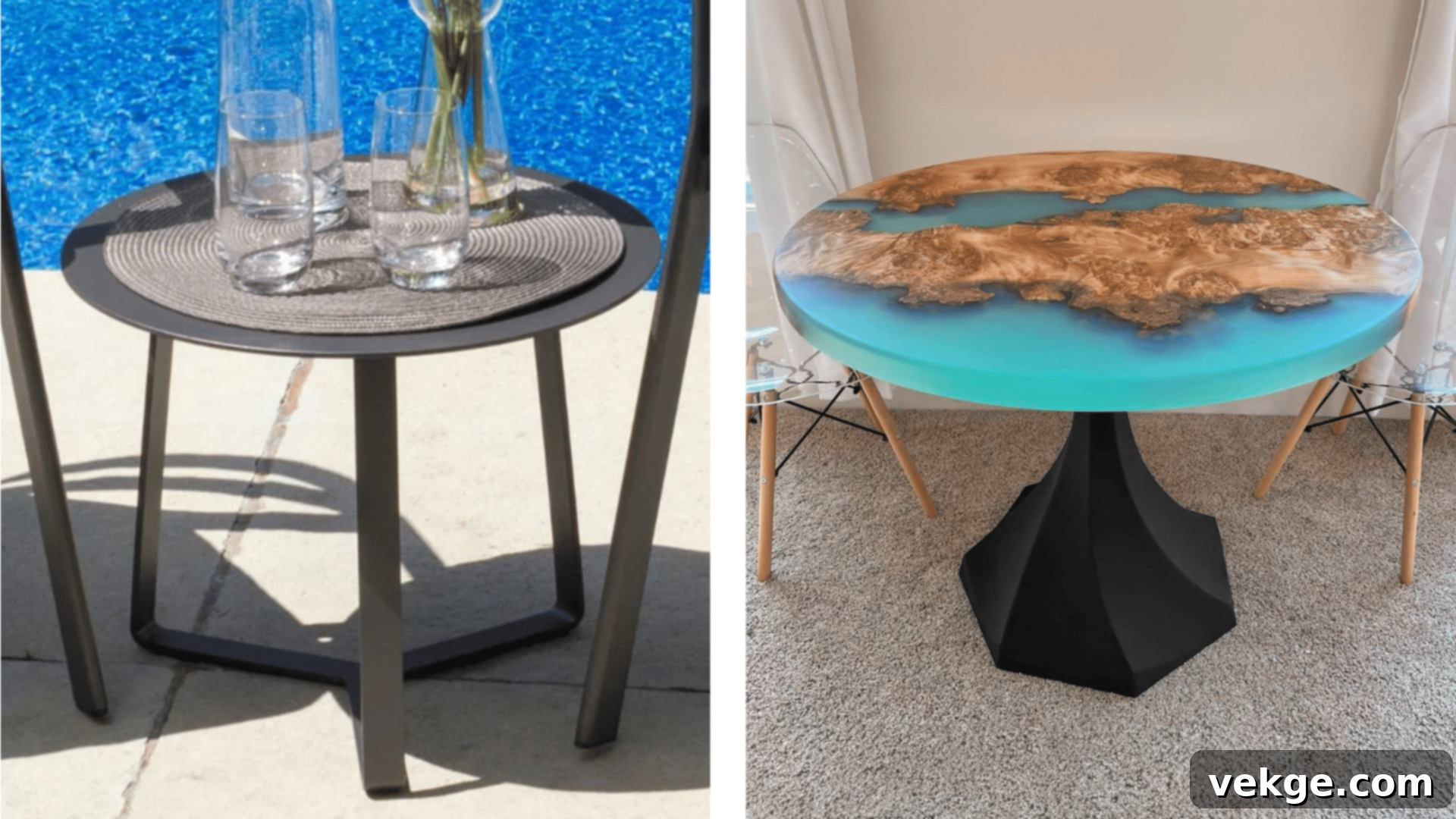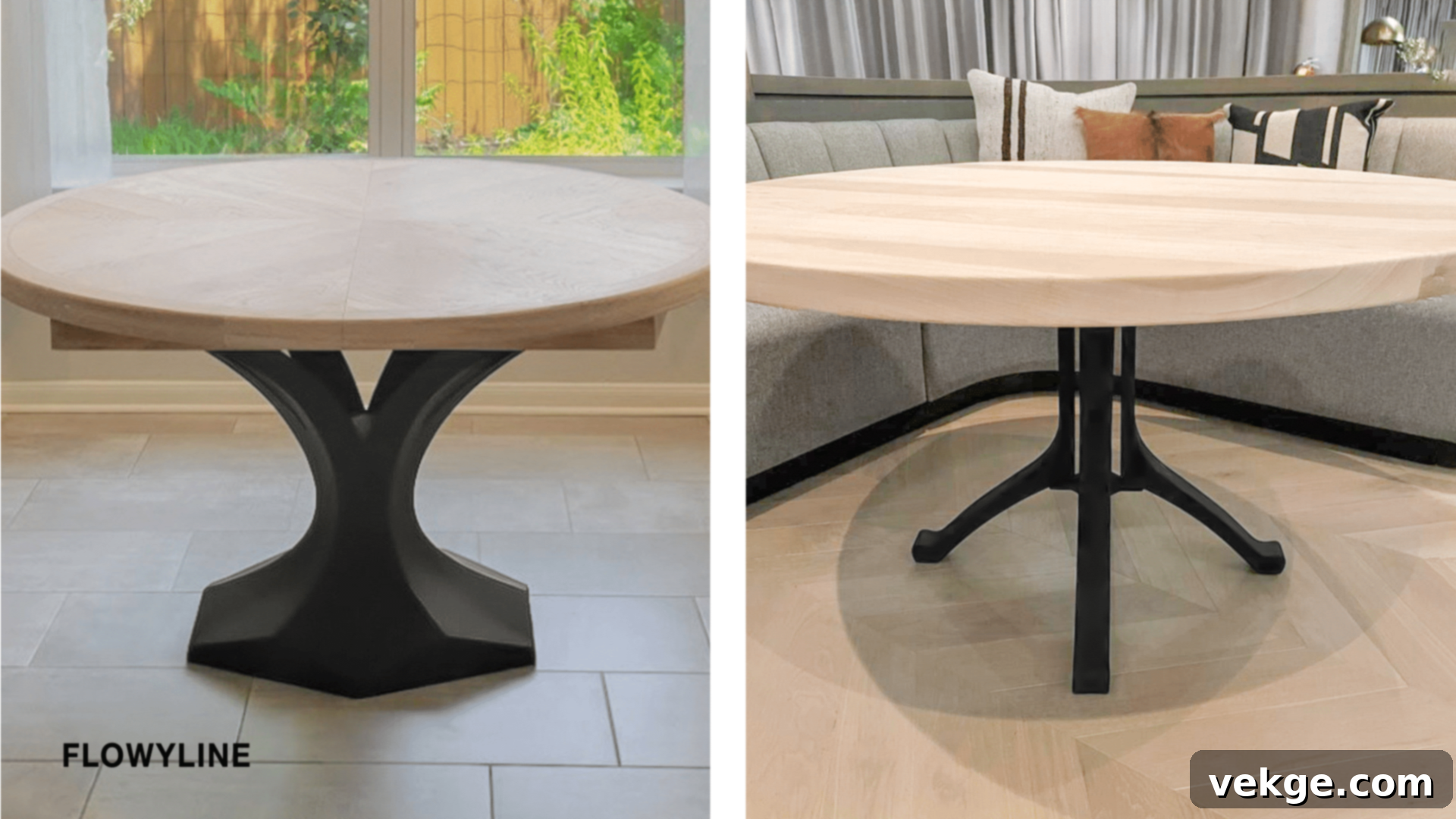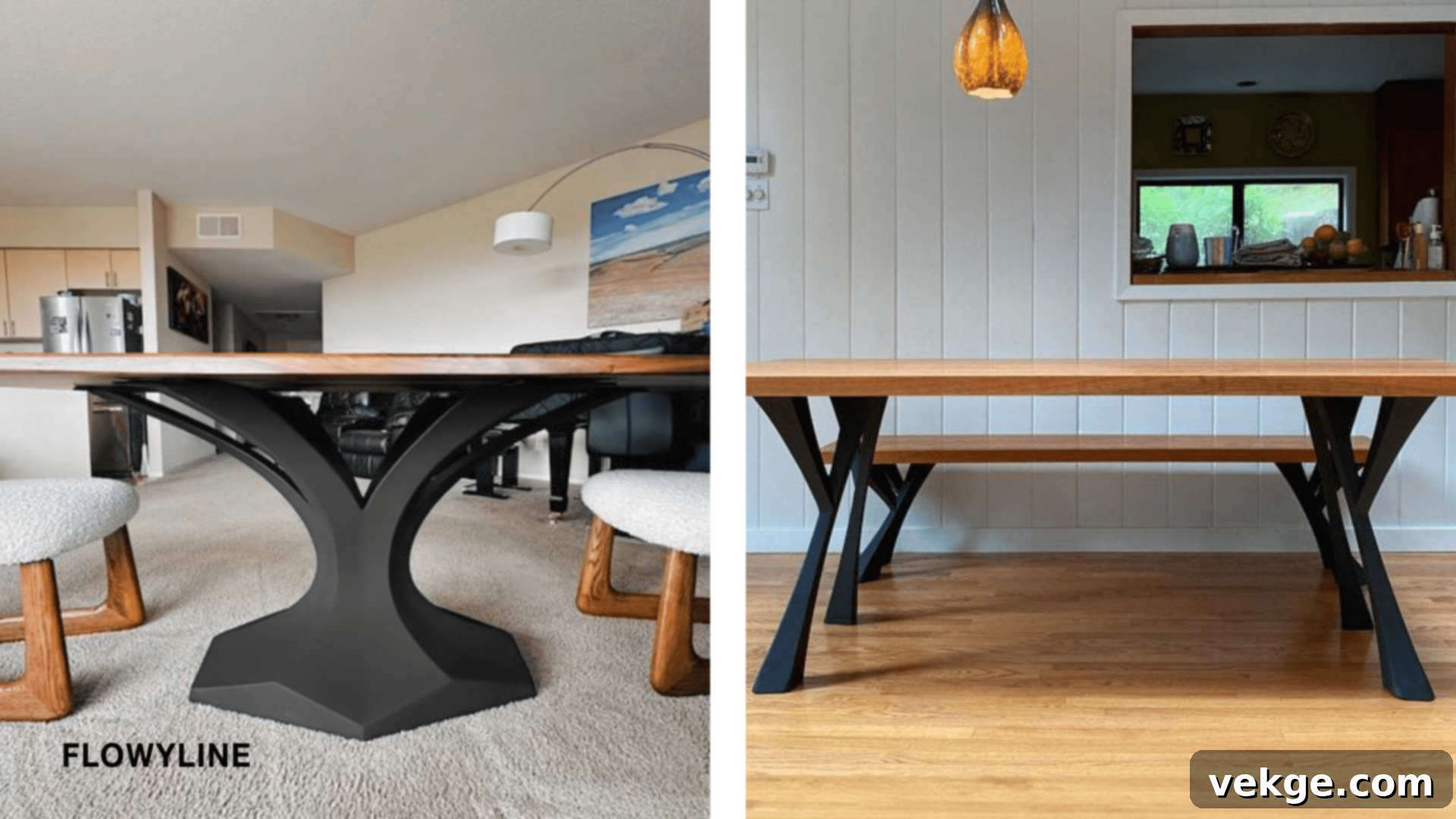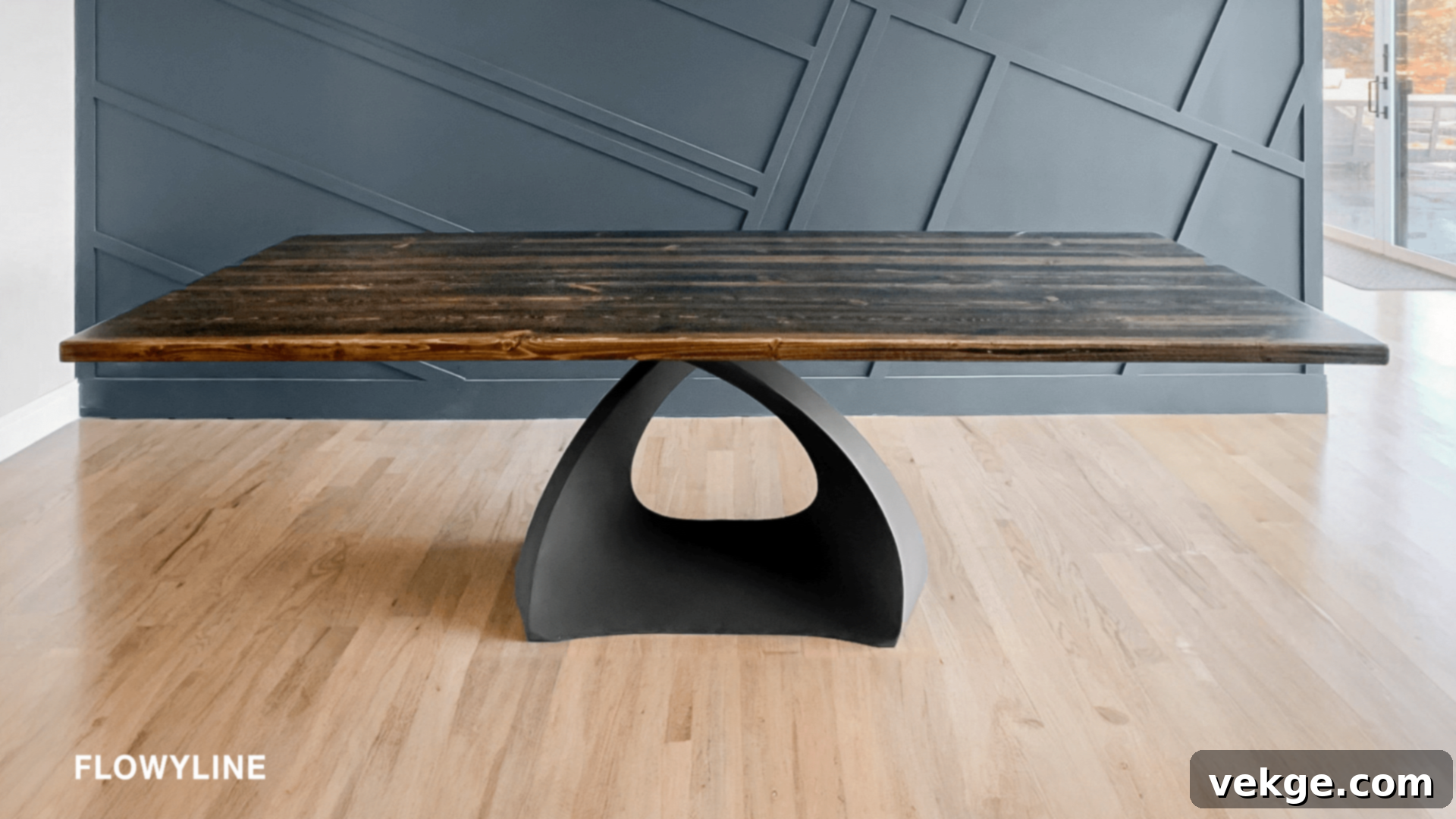Ultimate Guide to Choosing the Perfect Metal Table Base: Style, Stability & Durability
Metal table bases, often the unsung heroes of interior design, play a pivotal role in defining the character and functionality of a space. While frequently overshadowed by the tabletop itself, or even confused with individual metal table legs, a well-chosen metal table base is foundational to a table’s stability, durability, and overall aesthetic appeal. This comprehensive guide will delve into the essential aspects of selecting a metal table base, highlighting their unique advantages and distinguishing them from traditional table legs, ensuring you make an informed decision for your next furniture project.
The Indispensable Role of Metal Table Bases in Living Spaces
Beyond merely holding up a tabletop, a metal table base contributes significantly to the functionality and ambiance of any room. Their inherent properties make them a superior choice for various applications, offering benefits that extend far beyond simple support.
- Unmatched Stability: The primary function of any table support is stability, and metal table bases excel in this regard. Designed with a central or broad footprint, they provide maximum support for a wide array of tabletops, including large, heavy, or irregularly shaped surfaces. This robust foundation ensures the table remains steady, preventing wobbling, shaking, or tipping, even under significant impact. This is particularly crucial for dining tables where activity is high, or for conference tables needing unwavering reliability.
- Exceptional Durability: Metal stands as a testament to longevity. Unlike many other materials, metal is inherently resistant to warping, cracking, or succumbing to daily wear and tear. Its resilience against physical stress and environmental factors makes it an ideal material for furniture that is built to last for generations. Many metal bases also feature protective coatings like powder coat finishes, which further enhance their resistance to scratches, chips, and corrosion, ensuring their beauty and integrity endure for years.
- Optimized Space-saving and Legroom: One of the most practical advantages of a table base, particularly pedestal or trestle designs, is its efficiency in space utilization. By centralizing support, typically with one or two structural elements rather than four individual legs at the corners, metal table bases offer significantly more legroom for occupants. This design flexibility allows for easier seating arrangements, enabling more chairs to be comfortably placed around the table without obstruction, making them perfect for maximizing space in compact dining areas or busy commercial settings.
- Versatile Aesthetics and Design Potential: Metal table bases are not just about function; they are also powerful design statements. The vast variety of designs, finishes, and materials allows them to seamlessly integrate with and enhance virtually any interior style. From the sleek, minimalist lines of modern designs to the intricate, robust forms of industrial or traditional aesthetics, a metal base can transform a simple tabletop into a focal point. Finishes like brushed steel, polished chrome, matte black, or even custom powder-coated colors offer endless possibilities to match or contrast with your existing decor, injecting personality and sophistication into your space.
Exploring Common Types of Metal Used in Table Bases
The choice of metal significantly impacts the base’s appearance, performance, and suitability for different environments. Each metal offers a unique set of characteristics, making it crucial to understand their properties before making a selection.

- Cast Iron: Renowned for its exceptional sturdiness and stability, cast iron bases exude a classic, industrial, or rustic charm. This heavy material is perfect for supporting very substantial tabletops and is often seen in outdoor settings (with proper treatment) or in furniture designed for a robust, traditional aesthetic. While incredibly strong, its primary drawbacks include its significant weight, higher cost, and susceptibility to corrosion if exposed to moisture and air without protective coatings like paint or powder-coating. Regular maintenance is key for outdoor applications.
- Stainless Steel: Highly prized for its strength, versatility, and sleek appearance, stainless steel can be precisely molded into a myriad of beautiful and intricate shapes. Its inherent rust resistance is a major advantage, making it suitable for both indoor and outdoor use. Different grades exist, with Type 304 being common for indoor furniture and Type 316 (marine-grade) offering superior corrosion resistance for harsher outdoor or coastal environments. While highly durable, stainless steel can scratch more easily than some other metals and tends to be more expensive. Its clean, contemporary look makes it a favorite for modern and minimalist designs.
- Aluminum: Lightweight and naturally corrosion-resistant, aluminum is a popular choice for outdoor furniture and pieces that require easy mobility. Its light weight makes it ideal for portable tables or designs where a less imposing presence is desired. While not as strong as steel or iron, its strength-to-weight ratio is impressive, and it can be treated with anodized or powder-coated finishes for enhanced durability and aesthetic appeal. The main disadvantage is that it is generally less durable under extreme loads compared to steel or cast iron.
- Steel (Carbon Steel/Mild Steel): Often referred to simply as “steel,” carbon steel (or mild steel) is perhaps the most widely used metal for table bases due to its excellent strength, affordability, and workability. It can be easily cut, welded, and shaped into virtually any design, from clean geometric forms to complex sculptural pieces. While not inherently rust-resistant like stainless steel, carbon steel can be effectively protected with various finishes such as powder coating, clear coats, or electroplating, which also offer a vast range of color and texture options. This makes it incredibly versatile for indoor furniture and suitable for covered outdoor areas when properly protected. Its robust nature makes it ideal for heavy-duty applications, providing reliable support for almost any tabletop material.
Choosing the Right Metal Table Base for Your Needs
Selecting the perfect metal table base involves considering several practical and aesthetic factors. A thoughtful approach ensures your table not only looks great but also performs optimally for its intended use.

Purpose of the Table
Understanding the table’s primary function is paramount. Different table types demand different characteristics from their bases, impacting everything from size and stability to material and design. For instance, dining table dimensions and requirements will vary significantly from those of a coffee table.
- Dining Table: For dining tables, paramount considerations include exceptional stability, ample legroom for comfortable seating, and a robust weight capacity to support heavy dishes, multiple users, and everyday activity. Pedestal or trestle bases are excellent choices, offering generous leg space and solid support.
- Coffee Table: Here, the focus shifts more towards aesthetics, appropriate height, and a balanced design that complements the living room’s scale without overpowering it. A lower profile and a design that integrates with the surrounding seating are key.
- Console Table: Often placed in hallways or behind sofas, console tables benefit from elegant yet sturdy bases that are not too bulky for narrow spaces. Designs that highlight the craftsmanship of the metal while maintaining a slim profile are ideal.
- Outdoor Table: For outdoor use, rust-resistant and weatherproof materials are essential. Aluminum, marine-grade stainless steel (Type 316), or powder-coated steel are highly recommended to withstand the elements without degradation.
- Desk or Office Table: Stability is crucial for a workspace, along with a design that allows for comfortable seating and ergonomic setup. Bases that offer cable management solutions or adjustable height features can be highly beneficial.
- Bar or Counter Height Table: These tables require exceptionally stable and often heavier bases to prevent tipping, given their increased height. A wide base footprint is vital for safety and balance.
Other Crucial Factors to Consider
Beyond the table’s purpose, a range of other considerations will guide you to the perfect metal table base:
- Current Interior Style: Does your space lean towards modern, traditional, industrial, farmhouse, or eclectic? The base should harmonize with your existing decor. A sleek, polished chrome base might suit a modern minimalist room, while a raw, cast iron base would be perfect for an industrial loft.
- Tabletop Material: What is your tabletop made of? (wood, glass, marble, concrete, quartz). Heavy materials like stone require a very robust base with adequate weight capacity. Glass tops often pair well with minimalist or sculptural bases that allow light to pass through. Ensure the base design and mounting system are appropriate for your chosen tabletop.
- Design Preference: Do you prefer a simple, understated design that lets the tabletop shine, or a unique, sculptural base that acts as a statement piece? Metal offers endless possibilities for intricate patterns, geometric forms, or elegant curves.
- Adjustability Requirements: Do you need the base to be adjustable in height for different uses, or to compensate for uneven floors? Look for bases with leveling feet or adjustable columns for maximum versatility.
- Maintenance and Lifestyle: Are you a busy individual who prefers low-maintenance items, or do you enjoy regular cleaning? Consider fingerprint-resistant finishes, ease of cleaning, and the material’s inherent resistance to smudges and marks.
- Budget Constraints: Metal table bases come in a wide price range depending on the material, design complexity, and finish. Set a realistic budget and explore options within that range, balancing cost with desired quality and aesthetic.
- Indoor or Outdoor Use: Reiterate the importance of material choice for the environment. Stainless steel (especially 316 grade) and powder-coated aluminum or steel are excellent for outdoor use, while cast iron requires specific weatherproofing.
- Multi-Purpose Use: If you envision using the table for various functions, consider a versatile base design that can adapt. A sturdy, neutral-colored base might be easier to re-purpose than a highly specialized or brightly colored one.
- Size and Weight of Tabletop: This is critical. A base must be appropriately sized and strong enough to safely support the tabletop’s dimensions and weight. Overloading a base can lead to instability and damage. Consult manufacturer guidelines for weight capacity.
- Floor Type: Consider how the base will interact with your flooring. For hardwood or delicate surfaces, look for bases with protective glides or felt pads to prevent scratches.
Metal Table Base vs. Metal Table Legs: Understanding the Key Differences
The terms “metal table base” and “metal table legs” are often used interchangeably, leading to confusion. While both serve to support a tabletop, their fundamental structures, stability characteristics, installation methods, and aesthetic impacts differ significantly.

Let’s clarify these distinctions to help you choose the appropriate support system for your table:
Structure and Stability
- Metal Table Base: A metal table base typically consists of one or two unified structural components that serve as the entire foundation for the table. Common examples include pedestal bases (a central column with a wide foot), trestle bases (two end supports connected by a stretcher), spider bases, or disc bases. This centralized or distributed solid structure offers superior inherent stability, making it ideal for large, heavy, or irregularly shaped countertops. The weight distribution is optimized, minimizing wobble and providing robust support.
- Metal Table Legs: In contrast, metal table legs are individual components, usually four, that attach directly to the underside of the tabletop at separate points. While they can offer a clean, minimalist aesthetic, their stability is highly dependent on the quality of the individual legs, the robustness of the attachment points, and the weight distribution of the tabletop. They can be more prone to wobbling, particularly if the tabletop is heavy or if the legs are not securely fastened and braced. Types include hairpin legs, straight legs, tapered legs, and block legs.
Installation
- Metal Table Base: Depending on the design, metal table bases may require more assembly. Some bases come as a single welded unit, while others might involve assembling a few larger components. However, once assembled, they provide a single, solid unit to which the tabletop is attached. The installation often focuses on securely mounting the tabletop to the top plate of the base.
- Metal Table Legs: Metal table legs are generally easier to install, often involving simply screwing each individual leg into pre-drilled holes or attachment plates on the underside of the tabletop. This makes them highly suitable for DIY projects and offers more flexibility in leg placement, though precise measurements are crucial for even support.
Aesthetics and Design Flexibility
- Metal Table Base: Bases can be sculptural and serve as a prominent design element. Their substantial presence can define the table’s style, from grand and traditional to sleek and modern. They often offer greater creative freedom for complex metalwork and integrated design features.
- Metal Table Legs: Legs tend to offer a more minimalist or understated look, allowing the tabletop to be the primary visual focus. They can create a lighter, more open feel, especially with slender designs like hairpin legs, and are versatile for a range of styles from mid-century modern to contemporary.
Space and Legroom
- Metal Table Base: Centralized support of bases maximizes legroom, allowing chairs to be placed freely around the table without encountering an obstruction from a corner leg. This is a significant advantage for dining and conference tables.
- Metal Table Legs: Individual legs can sometimes restrict seating, as chairs must be positioned to avoid hitting the legs, potentially limiting the number of people who can sit comfortably at the table.
Weight Capacity
- Metal Table Base: Due to their unified and often heavier construction, table bases generally offer superior weight capacity and are better suited for exceptionally heavy tabletops made of materials like thick stone, concrete, or solid wood slabs.
- Metal Table Legs: While individual legs can be very strong, their overall weight capacity is often less than that of a dedicated base, especially for very large or heavy tabletops. The load is distributed across several separate points rather than a single, integrated structure.
Price
- Metal Table Base: Metal table bases are typically more expensive than individual legs. This is due to their larger size, the greater volume of material used, and potentially more intricate manufacturing processes involved in creating a cohesive, stable structure.
- Metal Table Legs: Metal table legs are generally more affordable, especially for simpler styles. Their individual nature often means less material and simpler fabrication per unit, making them a budget-friendly option for many DIY enthusiasts and furniture makers.
By understanding the various types of metal available, the specific purpose of your table, and the fundamental differences between metal table bases and individual table legs, you are now equipped to confidently choose the ideal metal table base. This decision will not only ensure the longevity and stability of your furniture but also elevate the aesthetic appeal of your space. Now, it’s your turn to create the perfect foundation for your tabletop!
